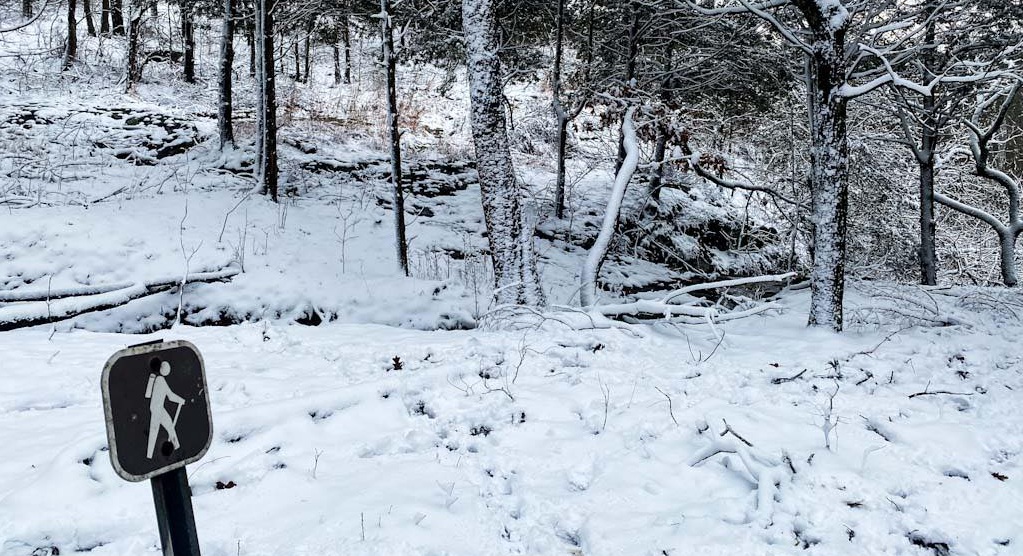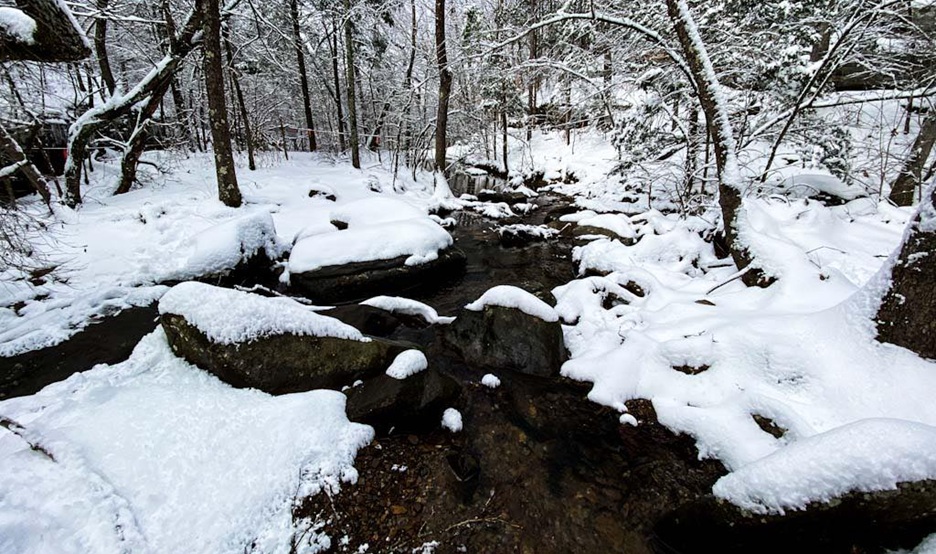Preventing Frostbite and Hypothermia on a Day Hike
As a hiker, preventing frostbite and hypothermia while day hiking is essential.
Winter hiking offers many benefits. No bugs, no snakes, no spider webs. You can see everything, and you’re not sweating so much.
However, winter brings many new hazards. Two of the biggest hazards are frostbite and hypothermia.
This can even happen to you, even on something as small as a day hike. It doesn’t take long for frostbite conditions to occur. Hypothermia is the same way.
In this article, I’ll share ways you can prevent frostbite and hypothermia, but in no way is this article meant to be any sort of medical advice.
Preventing Frostbite and Hypothermia Required Understanding
Before you can prevent frostbite and hypothermia, you need to understand what they are, how you can get them, and why they’re dangerous.
Frostbite is a serious condition in which your skin and underlying tissue freeze due to exposure to temperatures typically below 32 degrees Fahrenheit. Frostnip is the first symptom: your skin starts to tingle and become numb, and it may even turn different colors. Frostbite can lead to serious complications that may even require amputation.
Hypothermia is a serious condition in which your body temperature drops below 95 degrees Fahrenheit due to exposure to cold. Symptoms include pale skin, shivering, slurred speech, and a fast heartbeat. Hypothermia can reduce your ability to handle cold over time and may even kill you if not treated.
Both of these conditions are common because they can occur easily in colder weather, especially when exposure is prolonged, as with hikers.
Risk Factors Every Hiker Should Understand
When it comes to preventing frostbite and hypothermia, there are important risk factors every hiker should be aware of.
Wind chill is a big risk factor because it accelerates heat loss. When heat is removed, you are more likely to get frostbite and hypothermia.
Wet clothing and excessive skin moisture (sweat) can also increase the risk of frostbite and hypothermia. Wet clothing and sweat will reduce the heat reaching your body, lowering your temperature.
Fatigue from hiking without adequate calorie intake will increase your risk of frostbite or hypothermia. It’s important to stay fueled and hydrated when hiking in the cold.
Inadequate gear and a poor laying system can also increase the chances of getting frostbite and hypothermia. It’s important to stay warm and maintain a balanced temperature to support moisture management.
Lastly, hiking alone on unfamiliar trails can increase your risk of encountering various dangers. This is because of the hidden dangers you don’t see and an inability to save yourself when you’re in trouble.
Clothing Strategies for Preventing Frostbite and Hypothermia
One of the key methods of preventing frostbite and hypothermia is through proper clothing and layer management.
It’s important to practice an effective layer management system. There are three layering categories:
Base Layer: This should be a highly wicking material sitting close to the skin, such as wool or compression synthetics. This layer wicks moisture from your skin, keeping you dry.
Insulation Layer: This layer helps you stay warm but can also be shed to balance your temperature. This might include shirts, hoodies, hiking pants, tights, and light jackets.
Shell Layer: The shell layer is usually meant to protect you from the elements, such as wind, precipitation, and wintry mixes. This might be a heavier jacket, a raincoat, and a windbreaker.
It’s also important to protect your extremities when day hiking in winter. Use gloves and glove liners, waterproof footwear, hand and toe warmers, and head and face protection. Protect the most sensitive parts of your body that will likely get cold.
Remember, cotton kills! That’s because it would hold moisture, which would make you feel cold. It’s better to use wool or synthetic material that keeps you dry and warm.
Smart Hiking Practices to Stay Warm and Safe
Hiking smart will be essential in preventing frostbite and hypothermia on your day hike.
The most important goal is to stay dry at all costs. Avoid sweating by venting your layers and managing your pace. Bring some backup layers to change into if you get too sweaty, such as a dry shirt, socks, and gloves.
You should also fuel and hydrate often when it’s cold out. Eat high-calorie snacks to increase body heat, drink warm drinks, and avoid alcohol. Try to stay as hydrated as possible.
Remember that days in the winter months are usually shorter. This means that temperatures will drop as it gets darker. Try to start as early as you can in your hike and be out before dusk through proper planning.
Essential Gear for Preventing Frostbite and Hypothermia
Make sure you bring essential gear on your day hike, beyond the 10 hiking essentials.
Bring an insulated jacket and shell pants (such as rain pants) with you in case you need to add shell layers to protect yourself from the elements.
Bring gaiters with you to put over your shoes or boots when hiking in deeper snow.
Carry an emergency bivy or a space blanket in case you start to shiver and need to warm up faster.
Bring some fire-starting tools in case you have to stay the night in the woods or if your clothing gets wet and you need to dry it.
Bring traction control for your shoes or boots, such as Yaktrax or Microspikes, depending on the conditions.
Make sure you have at least three forms of navigation with you. This may include a map, compass, GPS unit, and a smartphone app with offline maps.
Finally, ensure you stay fueled and hydrated by bringing more snacks and water than you think you’ll need. Bring a water filter in case you run out of water and need to filter snow or creek water.
Cold Weather First Aid for Frostbite and Hypothermia
If you can respond early to instances of frostbite or hypothermia, consider following the suggested practices.
If you can get frostbite in its early stages, which is mainly the frostnip stage, you may be able to reduce its impact on it. Move the victim to a shelter, rewarm the affected areas, and avoid rubbing them.
For early hypothermia response, put on dry layers, provide warm fluids, and use body heat or emergency blankets to warm the victim.
When signs of frostbite and hypothermia become moderate to severe, it’s time to reach out for professional assistance, whether that’s emergency services or a visit to the nearest healthcare facility.
Winter Trail Planning Tips
Preventing frostbite and hypothermia relies heavily on planning your hike so you can do it safely from the start.
Start your plan by understanding what the weather will be like on the day of your hike. Know what the forecast and nowcast will be on that day. Most importantly, try to understand the wind chills and any precipitation that may fall.
Choose hiking trails that are appropriate for your hiking experience and the conditions you will be hiking in.
Let someone know where you plan to hike before you go. Print out a map and draw a circle where you will likely be. In the event that you don’t make it back, they can notify emergency responders to go look for you in case you’re lost, hurt, or worse.
Make sure you set a turnaround time so you can be back before it gets too dark, too cold, or before a big winter storm starts.
Bring a first-aid kit and a winter kit appropriate for the conditions you will be hiking in. Bring extra layers in case you need them. Bring more water and snacks than you will need in case you’re out in nature longer than you anticipated.
Common Mistakes Hikers Make (and How to Avoid Them)
The following mistakes are commonly made when hiking in winter, but they can be avoided entirely with a bit of common sense.
- Wearing Cotton: You will likely sweat. Sweat can make you shiver, keep you cold, and potentially lead to major problems. Wear wicking materials such as wool, polyester, nylon, or spandex.
- Ignoring Wind Chills: Not checking wind chill can be a pretty dangerous mistake when it comes to preventing frostbite and hypothermia. Wind chill values can help you decide what layers you’ll actually need to take with you.
- Overexertion: Many hikers push themselves too hard, leading to sweating. They’ll also become fatigued. These issues can lead to frostbite and hypothermia. Control your pace and rest often to avoid this.
- No Extra Layers: If your clothing gets wet or too sweaty, you could face serious problems. Avoid this by bringing extra layers, such as a shirt, socks, and gloves.
- Underestimation: Don’t make the mistake of underestimating your abilities to hike in the winter. You might think you can hike a harder route, but in reality, it takes more energy than what you’re probably used to. Start out small and go from there.
- It’s only a Short Hike Mentality: If the temperature and wind chills are cold enough, it might just take a few minutes to get you into the threat of frostbite and hypothermia. Make sure you prepare for hiking on short trails and long trails.
Final Thoughts About Preventing Frostbite and Hypothermia
Preventing frostbite and hypothermia is possible even on the coldest days, even when hiking.
You just need to be prepared for your hiking trip. You need to practice effective layering management. Most of all, use common sense and make smart decisions that benefit your health and safety.
If you’ve enjoyed reading this article and you’d like to support me in writing it, please consider becoming a Patreon Member to get more and to help motivate me to continue.
If you haven’t already, subscribe to my free newsletter for more hiking tips, reviews, and upcoming local events around the Shawnee National Forest and Southern Illinois.
And until next time, I’ll see you on the trail!

Shawn Gossman
Founder, Hiking with Shawn
Howdy folks! My name is Shawn Gossman and I founded Hiking with Shawn. I’m an avid hiker, cyclist and outdoorsman here in the Shawnee National Forest. I was born and raised in Southern Illinois and never want to leave. Click here to learn more about Shawn Gossman





